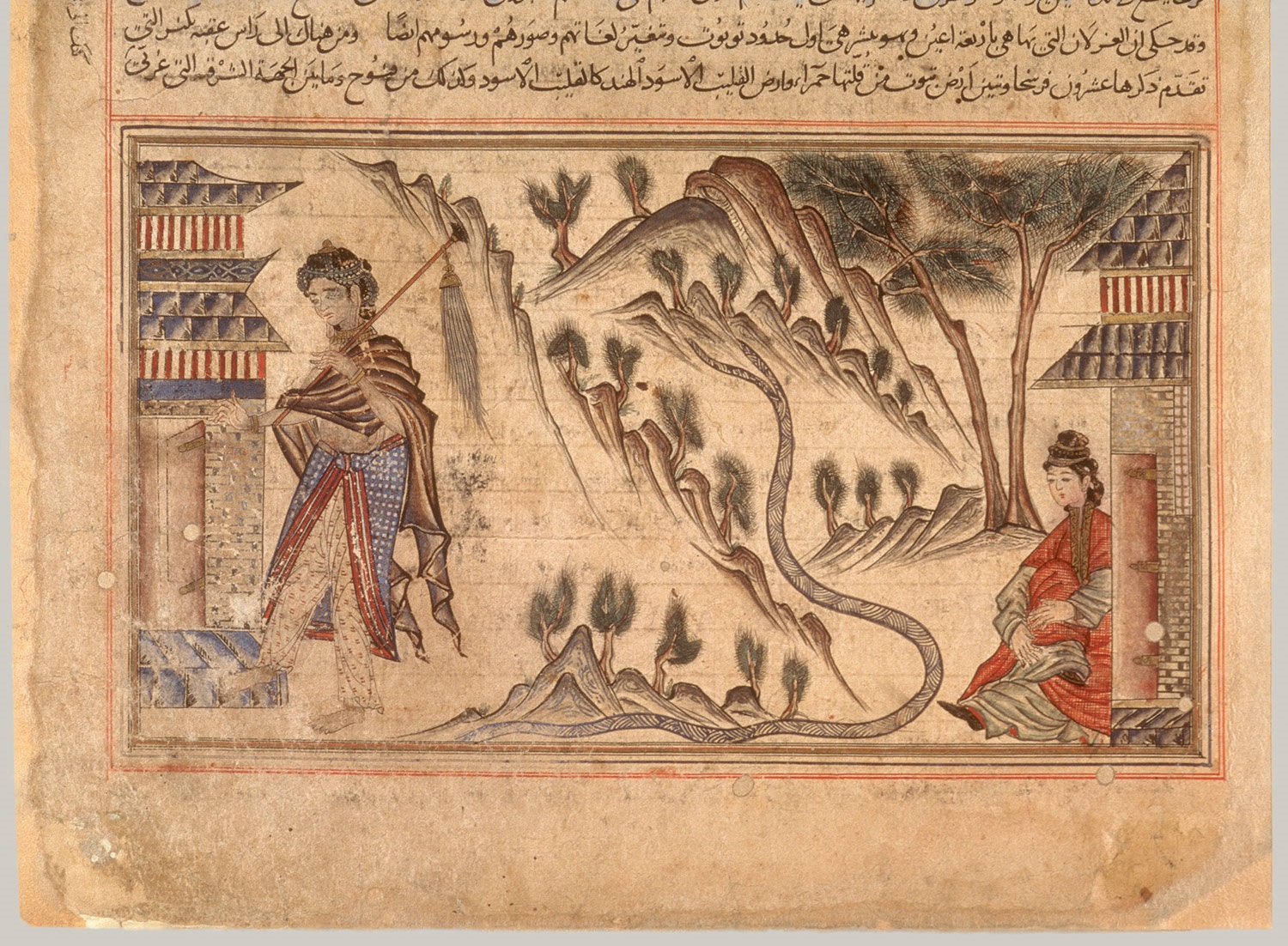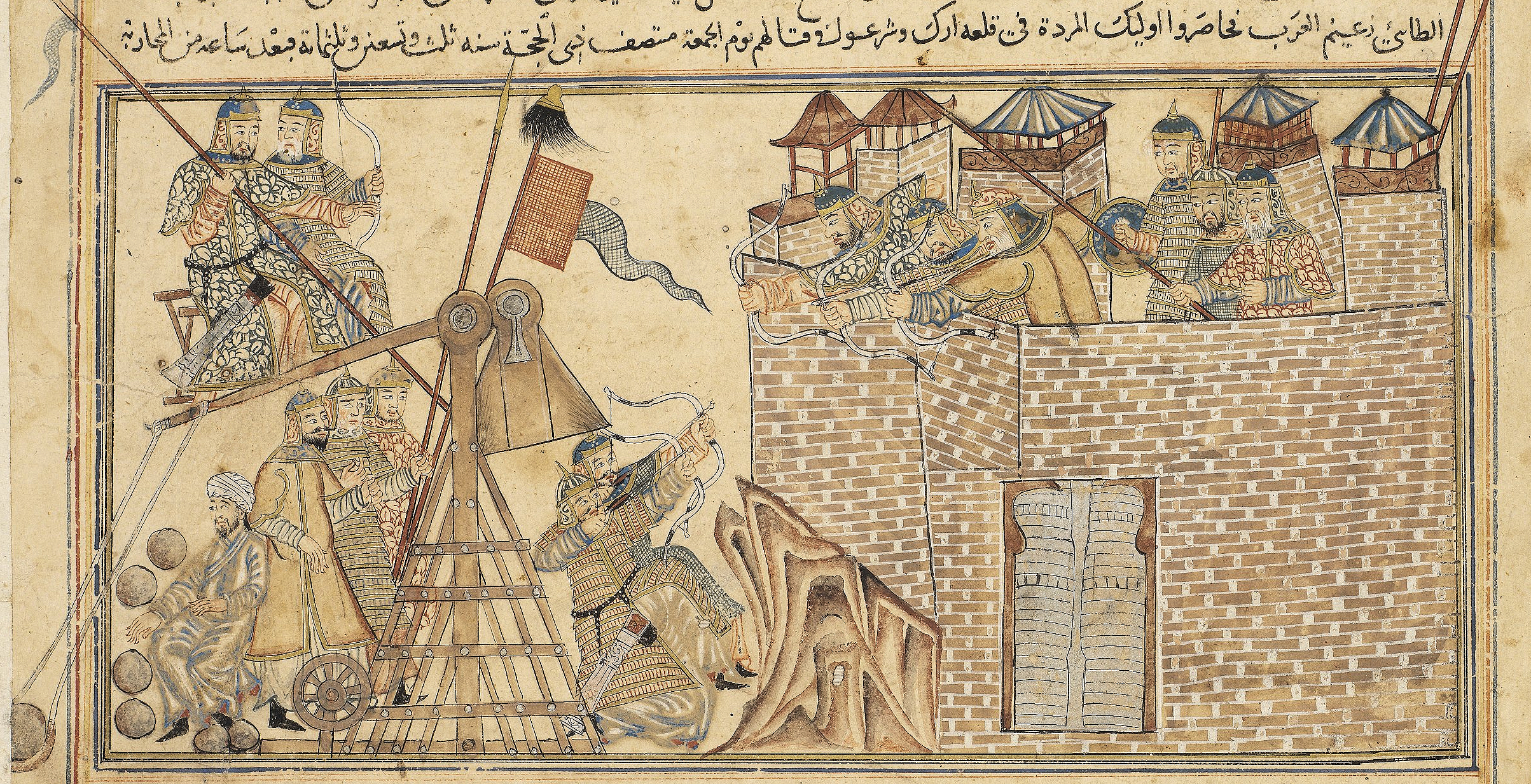|
Jami Al-Tawarikh
''Jāmiʿ al-Tawārīkh'' () is a work of literature and history, produced in the Mongol Ilkhanate. Written by Rashid al-Din Hamadani (1247–1318 AD) at the start of the 14th century, the breadth of coverage of the work has caused it to be called "the first world history". It was in three volumes and published in Arabic and Persian language, Persian versions. The surviving portions total approximately 400 pages of the original work. The work describes cultures and major events in world history from China to Europe; in addition, it covers Mongol Empire, Mongol history, as a way of establishing their cultural legacy. The lavish illustrations and calligraphy required the efforts of hundreds of scribes and artists, with the intent that two new copies (one in Persian, and one in Arabic) would be created each year and distributed to schools and cities around the Ilkhanate, in the Middle East, Central Asia, Anatolia, and the Indian subcontinent. Approximately 20 illustrated copies were ... [...More Info...] [...Related Items...] OR: [Wikipedia] [Google] [Baidu] [Amazon] |
Rashid-al-Din Hamadani
Rashīd al-Dīn Ṭabīb (; 1247–1318; also known as Rashīd al-Dīn Faḍlullāh Hamadānī, ) was a statesman, historian, and physician in Ilkhanate Iran."Rashid ad-Din" ''Encyclopædia Britannica''. 2007. Encyclopædia Britannica Online. Accessed 11 April 2007. Having converted to from by the age of 30 in 1277, Rashid al-Din became the powerful of Ilkhan Ghazan. He was commissioned by Ghazan to write the ... [...More Info...] [...Related Items...] OR: [Wikipedia] [Google] [Baidu] [Amazon] |
Ghazan
Mahmud Ghazan (5 November 1271 – 11 May 1304) (, Ghazan Khan, sometimes westernized as Casanus was the seventh ruler of the Mongol Empire's Ilkhanate division in modern-day Iran from 1295 to 1304. He was the son of Arghun, grandson of Abaqa Khan and great-grandson of Hulegu Khan, continuing a long line of rulers who were direct descendants of Genghis Khan. Considered the most prominent of the Ilkhans, he is perhaps best known for converting to Islam and meeting Imam Ibn Taymiyya in 1295 when he took the throne, marking a turning point for the dominant religion of the Mongols in West Asia: Iran, Iraq, Anatolia, and the South Caucasus. One of his many principal wives was Kököchin, a Mongol princess (originally betrothed to Ghazan's father Arghun before his death) sent by his great-uncle Kublai Khan. Military conflicts during Ghazan's reign included war with the Mamluk Sultanate for control of Syria and battles with the Turko-Mongol Chagatai Khanate. Ghazan also pursued dipl ... [...More Info...] [...Related Items...] OR: [Wikipedia] [Google] [Baidu] [Amazon] |
Khwarezm
Khwarazm (; ; , ''Xwârazm'' or ''Xârazm'') or Chorasmia () is a large oasis region on the Amu Darya river delta in western Central Asia, bordered on the north by the (former) Aral Sea, on the east by the Kyzylkum Desert, on the south by the Karakum Desert, and on the west by the Ustyurt Plateau. It was the center of the Iranian Khwarezmian civilization, and a series of kingdoms such as the Afrighid dynasty and the Anushtegin dynasty, whose capitals were (among others) Kath, Gurganj (now Konye-Urgench) andfrom the 16th century on Khiva. Today Khwarazm belongs partly to Uzbekistan and partly to Turkmenistan. Names and etymology Names Khwarazm has been known also as ''Chorasmia'', ''Khaurism'', ''Khwarezm'', ''Khwarezmia'', ''Khwarizm'', ''Khwarazm'', ''Khorezm'', ''Khoresm'', ''Khorasam'', ''Kharazm'', ''Harezm'', ''Horezm'', and ''Chorezm''. In Avestan the name is '; in Old Persian 𐎢𐎺𐎠𐎼𐏀𐎷𐎡𐏁 or 𐎢𐎺𐎠𐎼𐏀𐎷𐎡𐎹 (/hUvā ... [...More Info...] [...Related Items...] OR: [Wikipedia] [Google] [Baidu] [Amazon] |
Ghaznavids
The Ghaznavid dynasty ( ''Ġaznaviyān'') was a Persianate Muslim dynasty of Turkic peoples, Turkic ''mamluk'' origin. It ruled the Ghaznavid Empire or the Empire of Ghazni from 977 to 1186, which at its greatest extent, extended from the Oxus to the Indus Valley. The dynasty was founded by Sabuktigin upon his succession to the rule of Ghazni Province, Ghazna after the death of his father-in-law, Alp Tigin, who was an ex-general of the Samanid Empire from Balkh. Sabuktigin's son, Mahmud of Ghazni, expanded the Ghaznavid Empire to the Amu Darya, the Indus River and the Indian Ocean in the east and to Rey, Iran, Rey and Hamadan in the west. Under the reign of Mas'ud I of Ghazni, Mas'ud I, the Ghaznavid dynasty began losing control over its western territories to the Seljuk Empire after the Battle of Dandanaqan in 1040, resulting in a restriction of its holdings to modern-day Afghanistan, Pakistan and Northern India. In 1151, Sultan Bahram Shah lost Ghazni to the Ghurid dynasty, ... [...More Info...] [...Related Items...] OR: [Wikipedia] [Google] [Baidu] [Amazon] |
Fatimid Caliphate
The Fatimid Caliphate (; ), also known as the Fatimid Empire, was a caliphate extant from the tenth to the twelfth centuries CE under the rule of the Fatimids, an Isma'ili Shi'a dynasty. Spanning a large area of North Africa and West Asia, it ranged from the western Mediterranean in the west to the Red Sea in the east. The Fatimids traced their ancestry to the Islamic prophet Muhammad's daughter Fatima and her husband Ali, the first Shi'a imam. The Fatimids were acknowledged as the rightful imams by different Isma'ili communities as well as by denominations in many other Muslim lands and adjacent regions. Originating during the Abbasid Caliphate, the Fatimids initially conquered Ifriqiya (roughly present-day Tunisia and north-eastern Algeria). They extended their rule across the Mediterranean coast and ultimately made Egypt the center of the caliphate. At its height, the caliphate included—in addition to Egypt—varying areas of the Maghreb, Sicily, the Levant, and the Hej ... [...More Info...] [...Related Items...] OR: [Wikipedia] [Google] [Baidu] [Amazon] |
Abbasid Caliphate
The Abbasid Caliphate or Abbasid Empire (; ) was the third caliphate to succeed the Islamic prophet Muhammad. It was founded by a dynasty descended from Muhammad's uncle, Abbas ibn Abd al-Muttalib (566–653 CE), from whom the dynasty takes its name. After overthrowing the Umayyad Caliphate in the Abbasid Revolution of 750 CE (132 AH), they ruled as caliphs based in modern-day Iraq, with Baghdad being their capital for most of their history. The Abbasid Revolution had its origins and first successes in the easterly region of Khurasan, far from the Levantine center of Umayyad influence. The Abbasid Caliphate first centered its government in Kufa, modern-day Iraq, but in 762 the caliph al-Mansur founded the city of Baghdad as the new capital. Baghdad became the center of science, culture, arts, and invention in what became known as the Golden Age of Islam. By housing several key academic institutions, including the House of Wisdom, as well as a multiethnic and multi- ... [...More Info...] [...Related Items...] OR: [Wikipedia] [Google] [Baidu] [Amazon] |
Umayyad Caliphate
The Umayyad Caliphate or Umayyad Empire (, ; ) was the second caliphate established after the death of the Islamic prophet Muhammad and was ruled by the Umayyad dynasty. Uthman ibn Affan, the third of the Rashidun caliphs, was also a member of the clan. The family established dynastic, hereditary rule with Mu'awiya I, the long-time governor of Bilad al-Sham, Greater Syria, who became caliph after the end of the First Fitna in 661. After Mu'awiya's death in 680, conflicts over the succession resulted in the Second Fitna, and power eventually fell to Marwan I, from another branch of the clan. Syria remained the Umayyads' main power base thereafter, with Damascus as their capital. The Umayyads continued the Early Muslim conquests, Muslim conquests, conquering Ifriqiya, Transoxiana, Sind (caliphal province), Sind, the Maghreb and Hispania (al-Andalus). At its greatest extent (661–750), the Umayyad Caliphate covered , making it one of the largest empires in history in terms of ar ... [...More Info...] [...Related Items...] OR: [Wikipedia] [Google] [Baidu] [Amazon] |
Rashidun
The Rashidun () are the first four caliphs () who led the Muslim community following the death of Muhammad: Abu Bakr (), Umar (), Uthman (), and Ali (). The reign of these caliphs, called the Rashidun Caliphate (632–661), is considered in Sunni Islam to have been 'rightly guided' (Arabic: ), meaning that it constitutes a model ( ) to be followed and emulated from a religious point of view. History The first four caliphs who succeeded Muhammad are known as the Rashidun (rightly-guided) Caliphs. # Abu Bakr (; ) # Umar ibn al-Khattab (; ) – often known simply as Umar or Omar # Uthman ibn Affan (; ) – often known simply as Uthman, Othman, or Osman # Ali ibn Abi Talib (; ) – often known simply as Ali The succession to Muhammad is the central issue that divides the Muslim community. Sunni Islam, according to the author Carl Ernst, accepts the political status quo of their succession, regardless of its justice, whereas Shia Muslims largely reject the legitimacy o ... [...More Info...] [...Related Items...] OR: [Wikipedia] [Google] [Baidu] [Amazon] |




